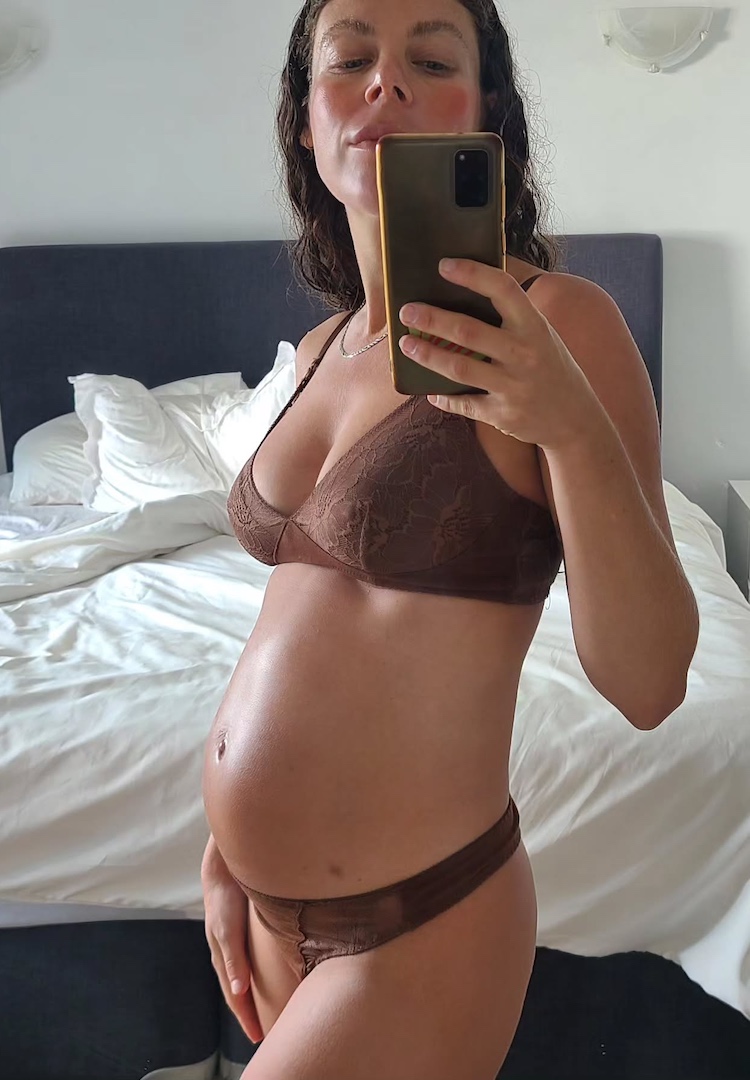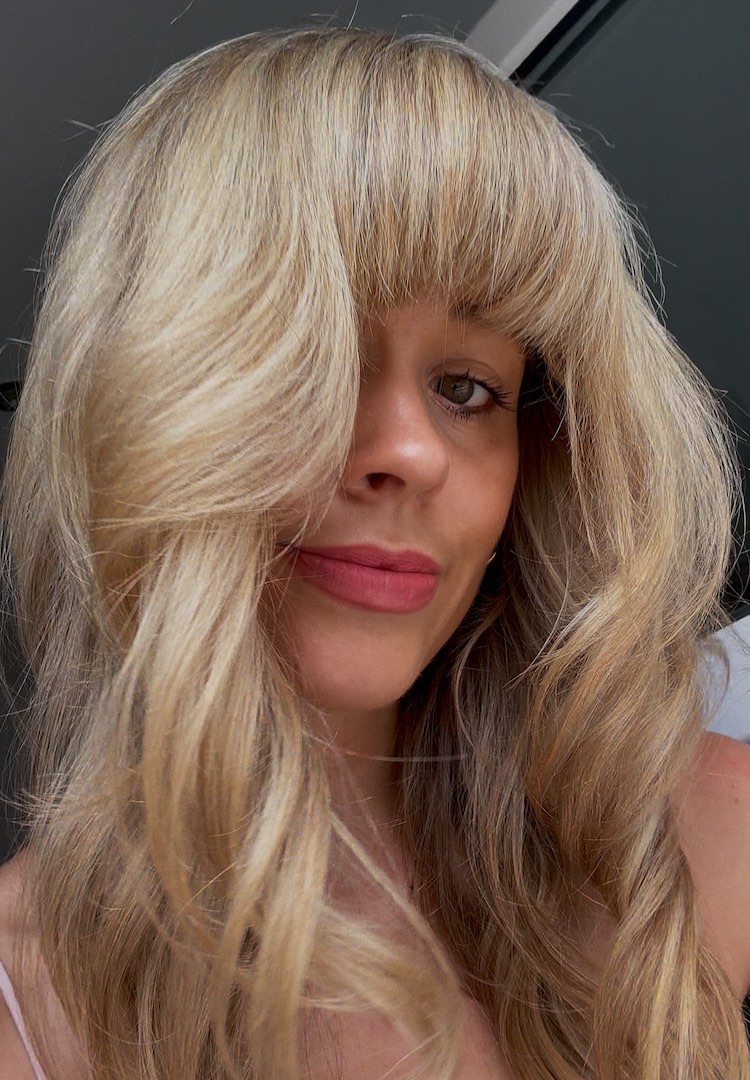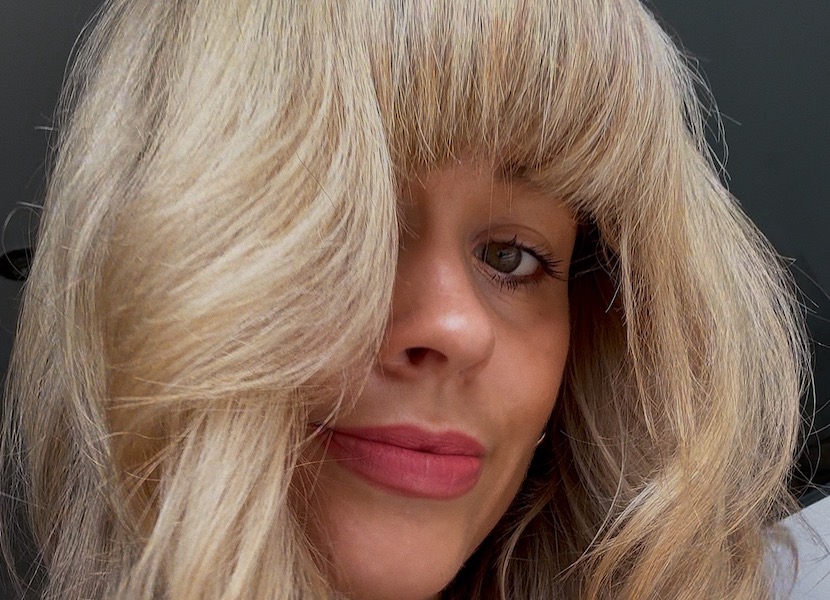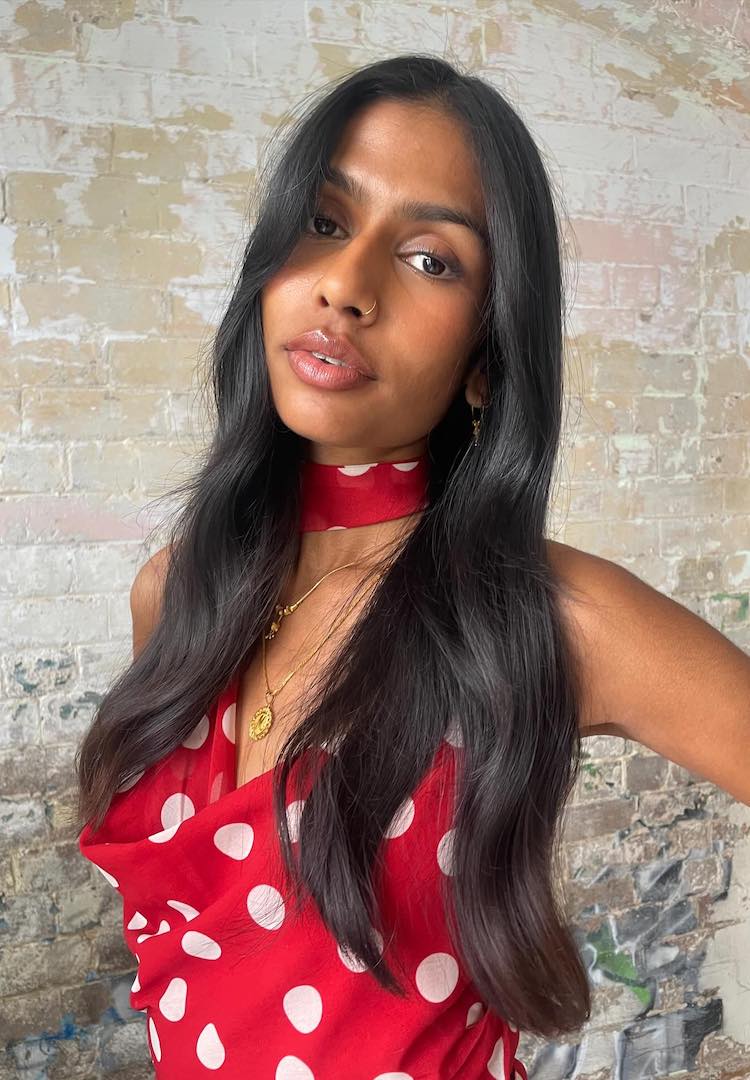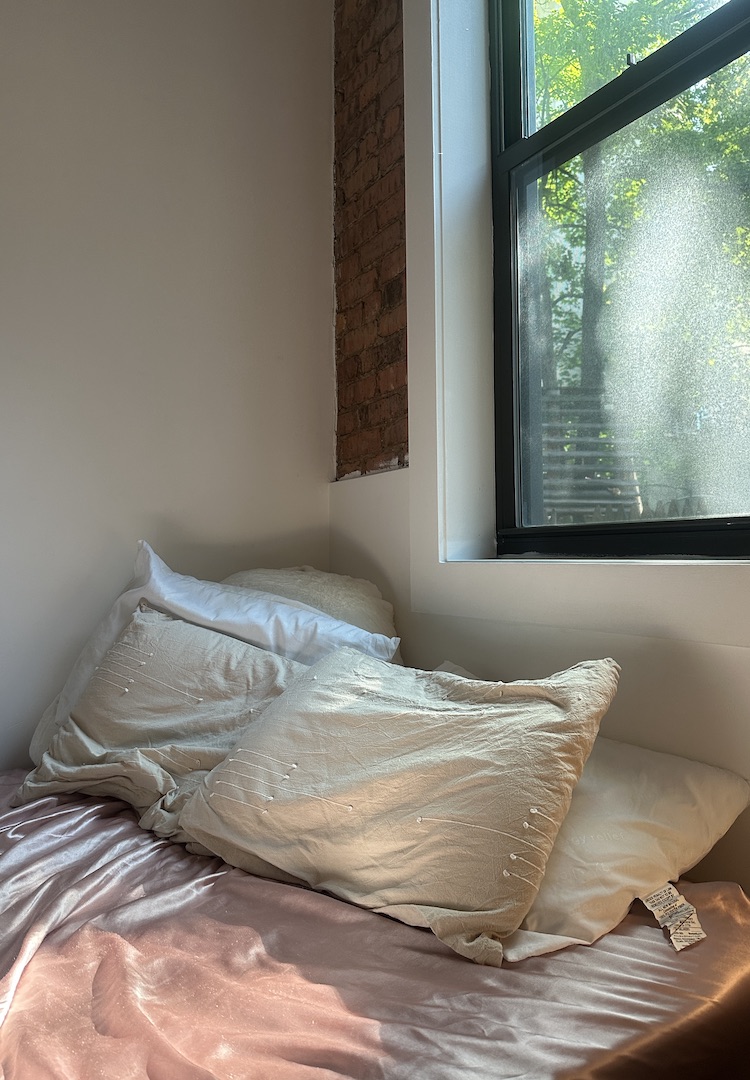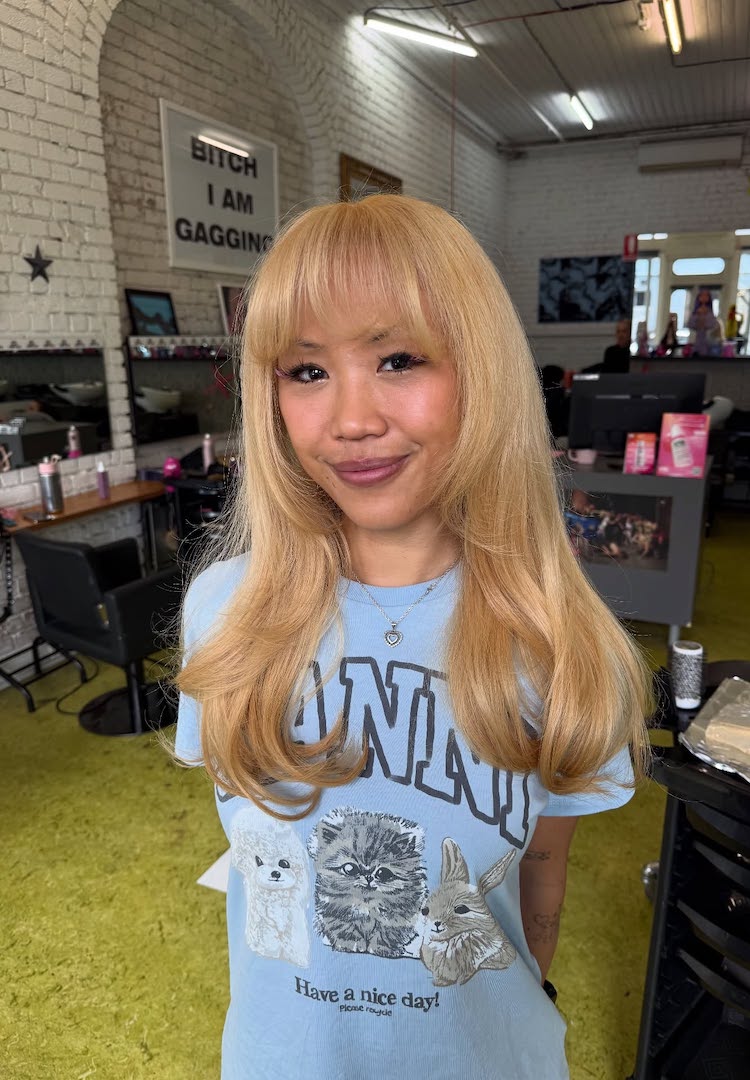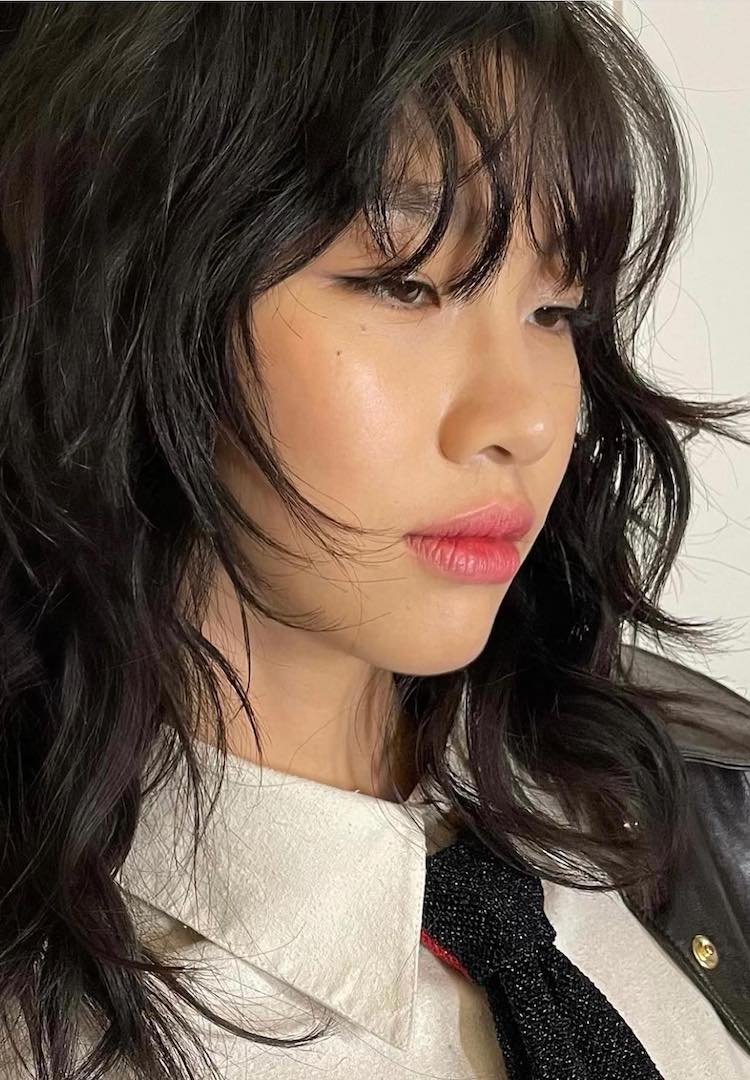We asked six people with great fringes to tell us their styling hacks
image via @hayleypeppin/INSTAGRAM
words by daisy henry
“Melbourne wind has tried to break me but I’ve learned a few tricks to make it work, or at least look like I meant it.”
I’ve long been a committed devotee to curtain bangs. I first had them cut them when in my early twenties, eager for some kind of change without wanting anything too drastic. They were side-sweeping, added dimension and shape to my face, and I managed to get the hang of styling them surprisingly easily. Since getting them cut, I haven’t ever gone back.
Now, I’d go so far as arguing that everyone should try a fringe at least once in their lifetime. The style will always be in vogue and there’s a suite of shapes to suit your style, from Dakota Johnson in Materialists and Daisy Edgar-Jones in Normal People, to Jane Birkin and Bridgette Bardot.
Want to snoop inside the beauty regimes of other creatives? Head here.
Another major selling point is they’re totally open to interpretation. You can commit wholeheartedly to a full-frontal and thick fringe, or keep it long and choppy if you’d prefer to dip your toe in.
Just as there’s no one way to cut a fringe, there’s also no set way of styling it. But don’t just take my word for it. To help make my case, while being realistic about the upkeep and maintenance required, I enlisted the expert advice of six people with exceptionally good-looking fringes for their top styling tips.
Allie Daisy King
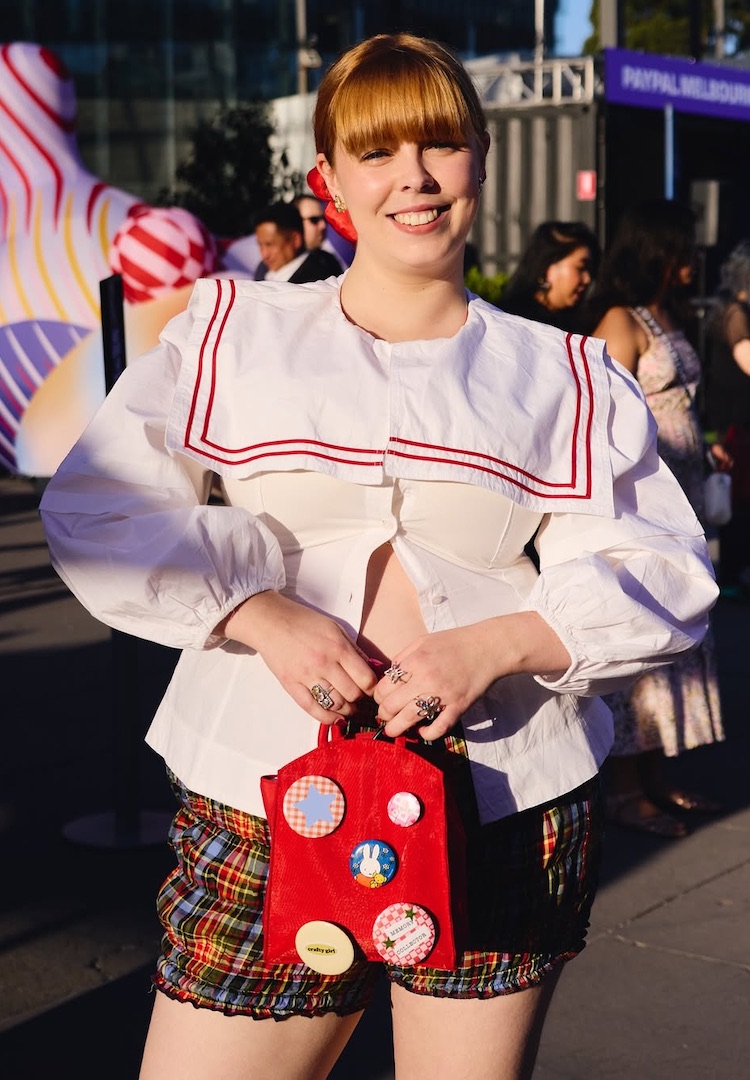
My fringe is, to quote Anthony Bridgerton, “the bane of my existence and the object of my desires” because bitch, night and day I do think about it. I regretfully have become the type of person who washes their hair pretty much daily but when I have a cheeky two day-er, I’ll often wash my bangs while cleansing my face with the cleanser. This might sound bonkers but once a hairdresser told me there’s no real difference between using a shampoo and using cleanser for a second day fringe and I took that advice and ran with it.
I use a round brush while drying my bangs to get them straight and bouncy. I usually get them cut monthly but if my hair is looking extra diabolical, I will occasionally partake in trimming them myself.
My biggest advice however, is always carrying around a hairbrush with you. It is an inside joke at this point with my friends that I have an emotional attachment to my Mason Pearson hairbrush and if the shoe fits I guess I better lace it up.
Brooke Weiss
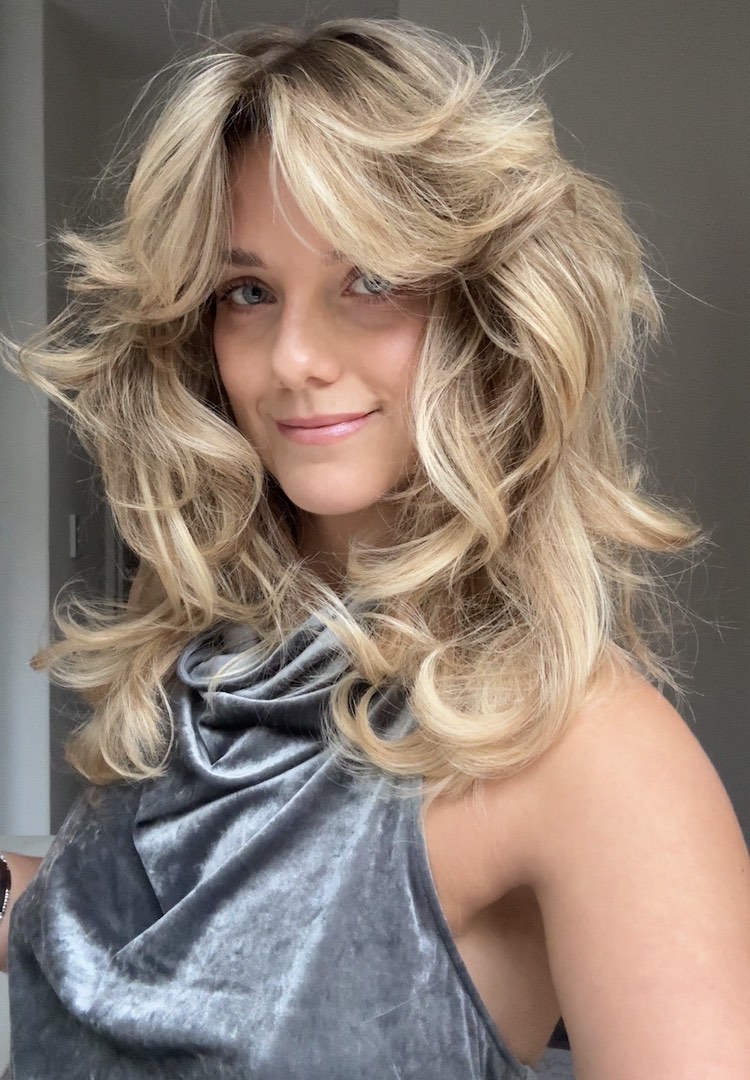
I begin every blowout with the fringe and I always reach for my Dyson Airwrap. A hack that works wonders for me and my ‘fab’ cowlick is to first set my fringe in a roller facing downward. Once I’ve finished the rest of my blow wave, I then roll my fringe in the opposite direction for about five minutes while I finish my makeup.
To revive it, I wet down my fringe with a little water and restyle it from damp most mornings. If it’s looking lacklustre, my lazy girl hack is applying a pea-sized amount of shampoo directly on my dry fringe, emulsifying as I rinse over the sink. Followed by my usual blow wave and roller. Dry shampoo in a clean fringe is also a game changer. Not only does it absorb oil and sweat but the product also gives you the perfect balance of texture and hold.
Fringe maintenance is very personal. I’m a hairdresser and if my clients can’t make it into salon, I don’t mind them doing a small at-home ‘baby trim’ between appointments. I’d much rather see their fringe sharp, fresh and out of their eyes than overgrown and losing shape.
Chanelle Lakafia
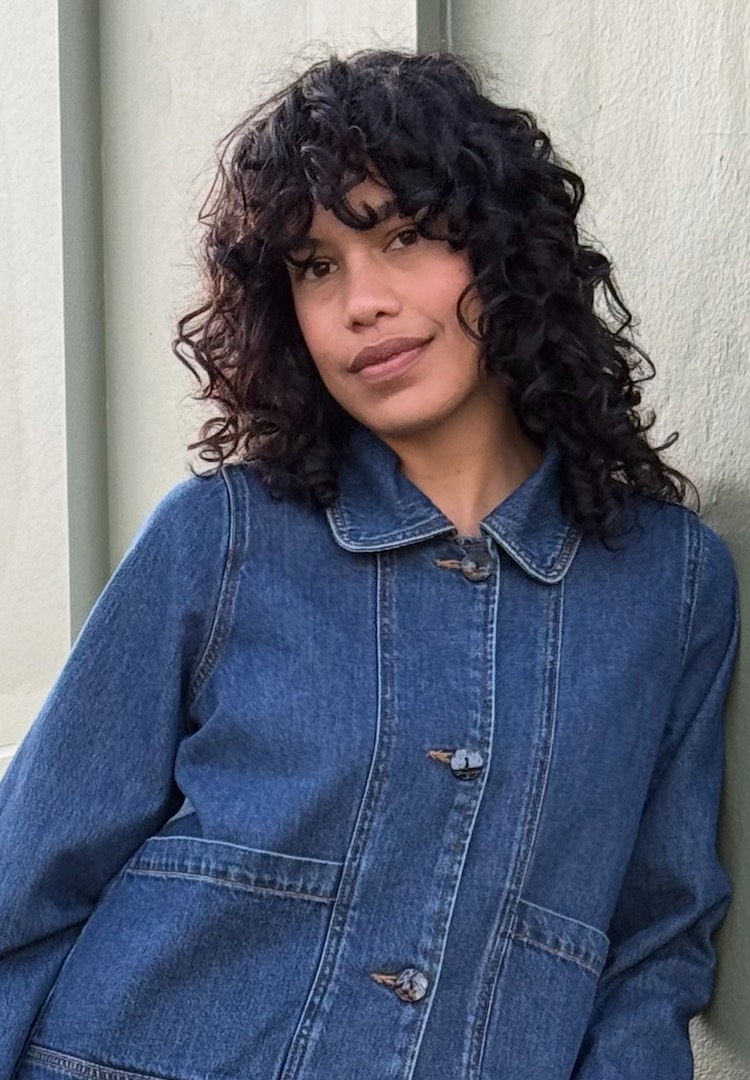
For the last five years, I think I’ve finally found what really works for me, which isn’t as high-maintenance as I would’ve thought. I’ve decided to invest in a really good haircut done by a curl specialist and I try to get it cut every four to five months just to maintain the layers and keep my fringe out of my eyes. If really necessary, I’ll cut a tiny bit off myself.
I scrunch in three products after each shampoo while my hair is still really damp. I use a leave-in to hydrate (usually my conditioner), a mousse for volume and a gel to ensure definition (both from John Frieda). As a finishing touch to break the ‘gel cast’, I’ll use a light hair oil.
I don’t finger coil anymore and would rather spend time drying my hair with a diffuser, head down and starting with my roots and fringe first in case I need to leave in a hurry, knowing the layers will already have a dry base.
I’ve also invested in a silk pillowcase to make sure my fringe looks good on days two and three. Most of the time I don’t really need to restyle my hair but in case of an emergency I’ll wet my hair again and apply a homemade gel made from boiled linseed to ensure hydration and definition, then finish with the diffuser.
Dee Salmin
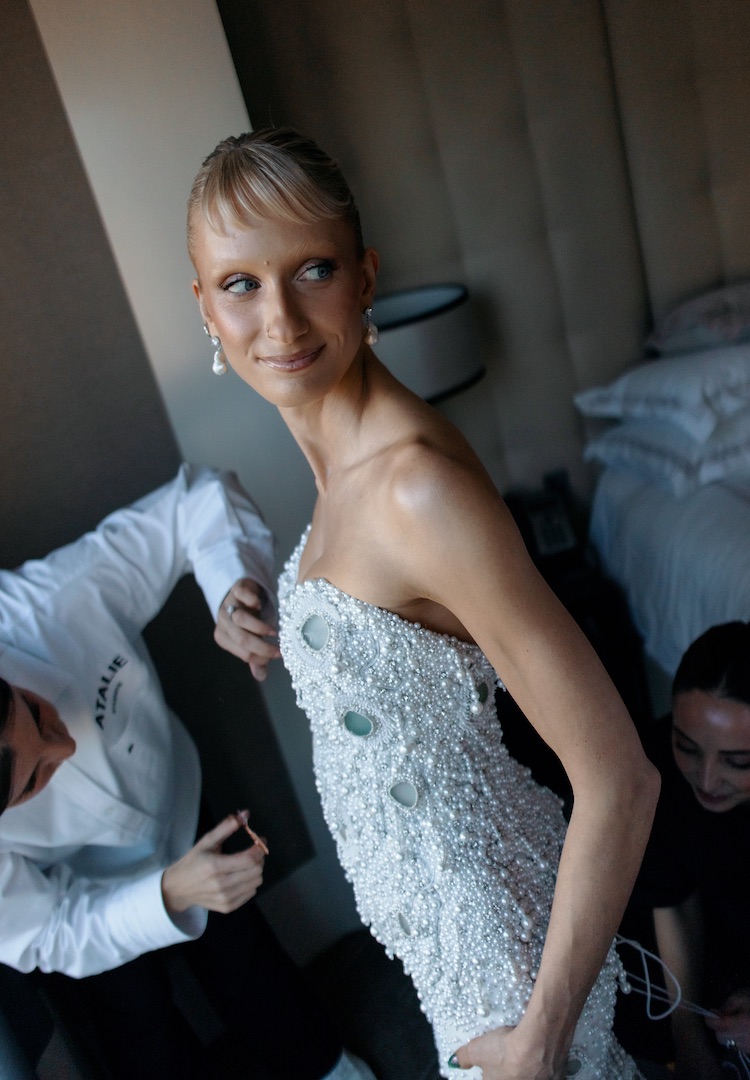
My fringe has been on a journey the past couple of years: from curtain bangs, to a harsh chop, to a soft wolf cut, to the micro fringe that I have now. And the main styling tip I have is one I learnt from one of my best friends, Brooke Hayward, who is an incredible hairdresser. It’s the the side-to-side blow dry technique.
Basically after you wash your hair, you use a blow dryer and a round brush and blow or sweep your fringe with the brush from side to side across the forehead. Switch directions (sweep left to right) until the hair dries. Then add in some sort of texturising product (I use Mr Smith dry texture spray) or hairspray to hold the fringe in place. It’ll usually stay as it is for a couple of days but by day three, my fringe pretty much turns into tuffs of hair that flick and poof up on the side of my face. When this happens, I’ll just shampoo my fringe in the sink and rinse and repeat the process with the blow dryer again.
I’ll usually get it cut every two months and I’ll start really micro and choppy, so it takes ages to grow out. Then I’ll wait until I notice that my hair is in my eyelashes and then I’ll cut it again. My biggest advice would be that whatever you do, do not cut a fringe yourself. I learnt the hard way during a covid mental breakdown and it took years to recover.
Sometimes when I bleach my eyebrows I’ll also add a bit of bleach (20 vol just from the chemist) into my fringe with a mascara wand, so I have a few highlights and the fringe pops a bit more. Despite what people say, I don’t think fringes are that much maintenance and if you’re thinking about it, you should definitely give it a go.
Laura Roscioli
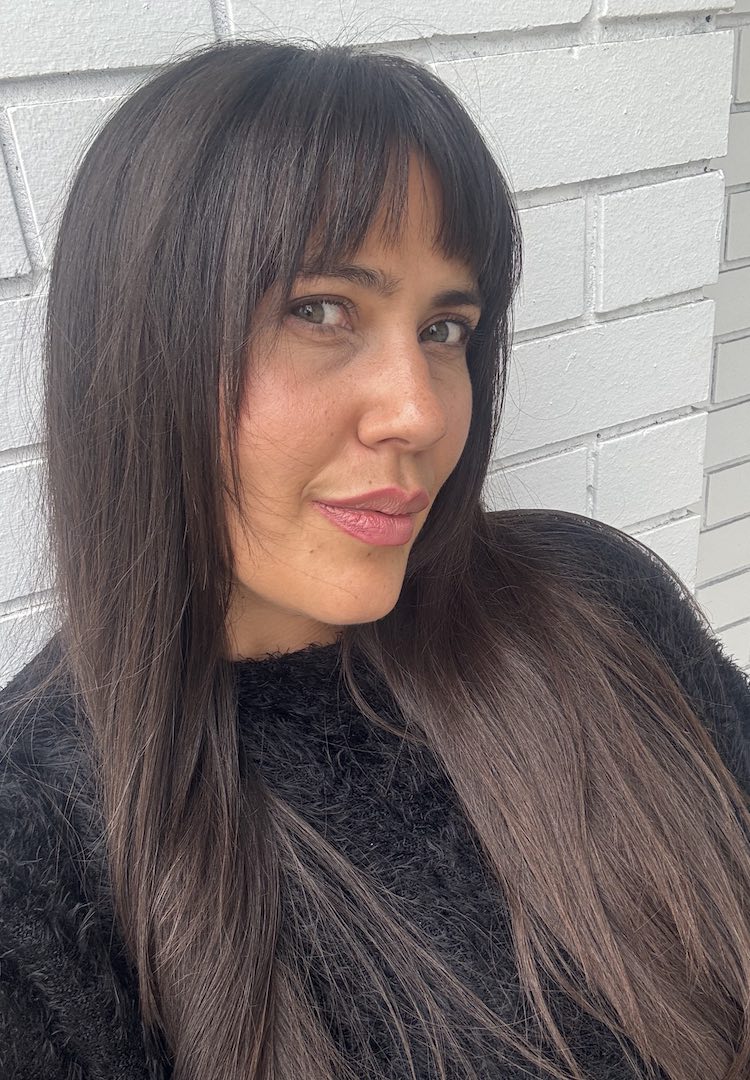
I’ve had a fringe for most of my adult life and honestly can’t picture myself without it. Melbourne wind has tried to break me but I’ve learned a few tricks to make it work, or at least look like I meant it.
Step one is to find a good hairdresser. Mine is Tara at Mitch Studio and she’s a magician. She cuts my fringe so when the wind blows it around, it falls into soft curtain bangs instead of sticking to my forehead. It’s intentional chaos, in a good way.
When it comes to styling, I blow dry straight down if I’m in the mood for a neat centre fringe or to the sides if I want something softer and more ‘curtain-y’. A velcro roller or round brush will give it a bit of bounce but honestly, a quick blast of the dryer is usually enough. And yes, I still reach for hairspray (dancer habits die hard).
Most mornings I don’t wash it because who has time? I’ll just refresh it with a cool shot from the hairdryer or a little dry shampoo for lift. If the weather’s truly unbearable, I give up on the fight and tie it back with a scarf, ribbon or whatever accessory is closest.
As for maintenance, I get it trimmed every three to four weeks so it stays in that sweet spot of framing my face without poking me in the eyes. Fringes can be a bit of work, sure. But once you’ve got your rhythm, they feel like a part of you.
Hayley Peppin
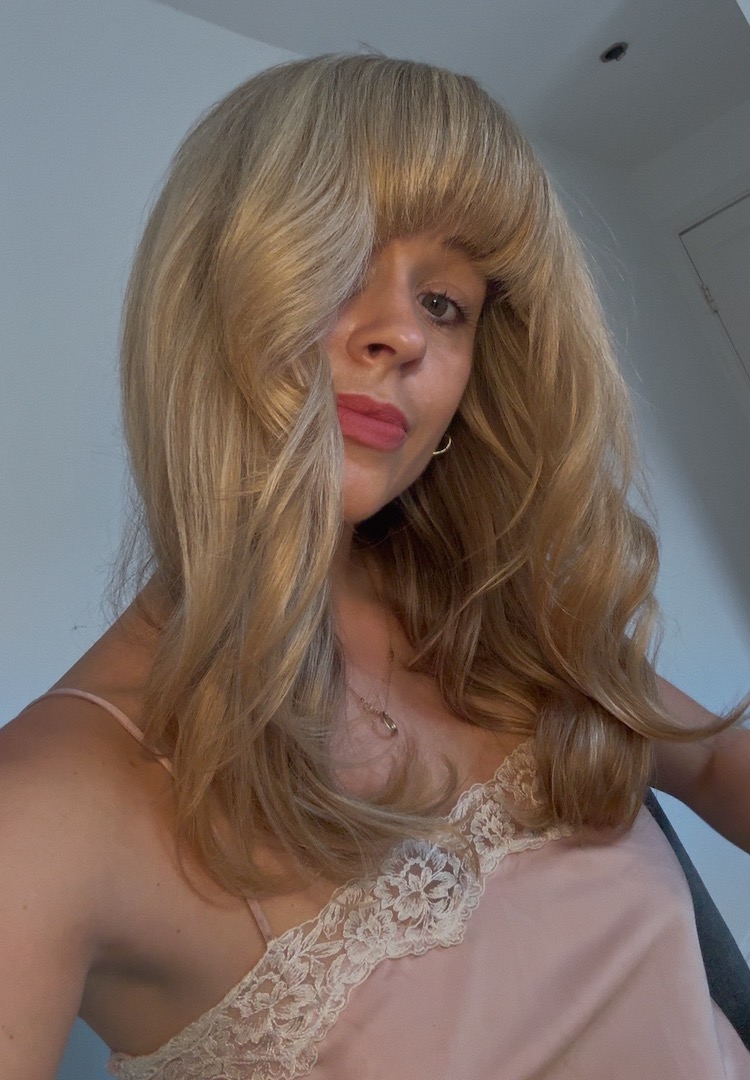
Aside from a brief styling interlude in my early twenties, I’ve been in a long-term relationship with my fringe for just over six-and-a-half years. I’m fully committed. It’s part of my DNA. It’s high maintenance yet high reward. I’m very close with my blow drier and dry shampoo. In fact, we catch up daily.
On wash day, I add a small amount of OUAI hair oil to the ends to help seal shine, then immediately grab my Dyson Airwrap Co-anda 2x to tame frizz. I’ll flip my fringe from side-to-side while blasting the Dyson’s fast dryer, then brush upwards with a paddle brush. I’ll finish with the Round Volumising brush, wrapping my fringe around the attachment. If you’re using a standard blow drier, the same technique applies, just swap for a radial hair brush and prepare for an arm workout. Every other day, I dry-blow it for volume, spritzing whatever dry shampoo’s on hand because fringes always grease up before the rest of your hair. Sweat, makeup and serums are the usual forehead culprits.
Sometimes I leave in a velcro roller if I’m feeling a bit flat, other times I want it sleek, so I’ll smooth it over with the hair straightener. I’m religious about professional upkeep, no matter where I am in the world. I get it trimmed and softened every three or so weeks. If I don’t trust my knife skills, I’m definitely not trusting my hair cutting skills.
And one final fringe tip: carry a mini brush everywhere. Between wind, rain and general movement, you’ll want a quick tidy-up.
For more fringe inspiration, try this.

